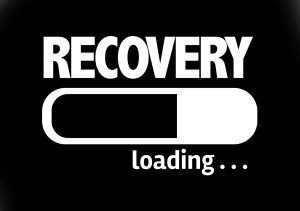
Define Threats & Consequences To Your Business For A Great Disaster Recovery Plan
The first step in formulating your disaster recovery plan is to identify all of the different threats that your company may face if any operations stop due to an unexpected event. You need to determine the type of impact that those problems would create and come up with a solution to fix them. As an example, if the phone structure of your company were to stop operating suddenly, how would you handle the loss of communication? You may decide that the best alternative would be to start using smartphones until the problem could be fixed.
That may mean your business will have to invest in cell phones for all of your employees. Your company could also look at a hosted VOIP option that would allow you to transfer phone calls to your cell phone on the fly. Part of the DRP process is to identify problems and come up with an appropriate solution when the issue occurs.
Each business is different so what you may consider a big issue may not be that big a problem for a company down the street. We suggest making a list of what problems could shut down your business. Now the possibilities are endless, and you are not going to be able to cover every incident but having a solid foundation in your DRP will go a long way.
You must consider short-term and long-term problems and large disasters. If a tornado swept through your area and shut down power for more than five days, how would you handle the situation? By coming up with an answer ahead of time, your business will have a plan of action to implement if the need ever arises — hopefully, it won’t.
3 Key Measures
A key aspect of your DRP is related to the measures that you use to protect your business. These include the following:
– Prevention
– Detection
– Correction
Formulating preventative measures is a tactic that is used to reduce damage or stop a potential threat from occurring before it strikes. Examples of measures that are used to prevent damage and problems include the use of generators and surge protectors. If the lights go out due to a power line that has come down and the utility company has no idea when power is going to be restored, generators would still be able to keep the necessary items running, and more importantly, your operations would not immediately come to a halt. Surge protectors would also protect electronic devices such as computers or routers from overloading due to a lightning strike. The installation of battery backup units may also be considered. This would give employees an extra amount of time to store data and shut down electronic devices. Having the ability to assess a disastrous situation helps to create a non-panic environment and implement solutions.
Detection devices should also be used to uncover unwanted circumstances such as a virus that’s infecting your data. You always want to have some type of antivirus software on your computer to protect the files and trade secrets of your company. Installing antivirus software and keeping it up-to-date ensures that your data and any web browsing is safe from hackers and other prying eyes. Cybersecurity should be a top priority that your business implements. Along with antivirus software, a strong firewall should be used with your operating system and router. Typically, these two walls of defense will keep out intruders. Traffic logs can be monitored to investigate any irregularities.

The last measure is of particular importance as it is used to restore a system if any catastrophe occurs. These are items such as having adequate insurance to cover for fire or water damage. Without incorporating corrective measures into a plan, it could totally wipe out your business.
Protecting Data From Loss
Virtual environments and cloud-based solutions have become the norm for many businesses. If you are using the cloud to perform any of your daily operations, you’ll need to ask the provider a few questions:
– How is the data from your company backed up?
– How does your cloud-based provider manage the data generated by your business?
– In the event of a data loss situation, is there a backup plan of action?
These questions are vital to the survival of your business since you wouldn’t have any physical access to your data. The same goes for your business if you currently have data stored on physical servers located on your premises. If a flood washes through, do you have a corrective measure in place to restore your lost files?
Testing Your DRP
After you have completed putting together your initial disaster recovery plan, it’s important that you test it and work out any problems. Your employees should be familiar with the plan and understand the steps they need to take to remedy any problems that endanger your business operations. Don’t forget to have some type of virtual location where all of your employees can meet so that communication can be continued.
After you run a test, identify all of the problems that arise. If they weren’t covered in your DRP, you’ll need to come up with solutions for them. If you are in a business that changes over time, it’s also important that you update your DRP periodically as needed. Need assistance creating your Disaster Recovery Plan feel free to contact our PRO’s. We are always happy to help.
Hi, My name is Josh Giesing. I am the President at Computer PRO Unltd. In my free time, I enjoy reading and have a passion for learning.
